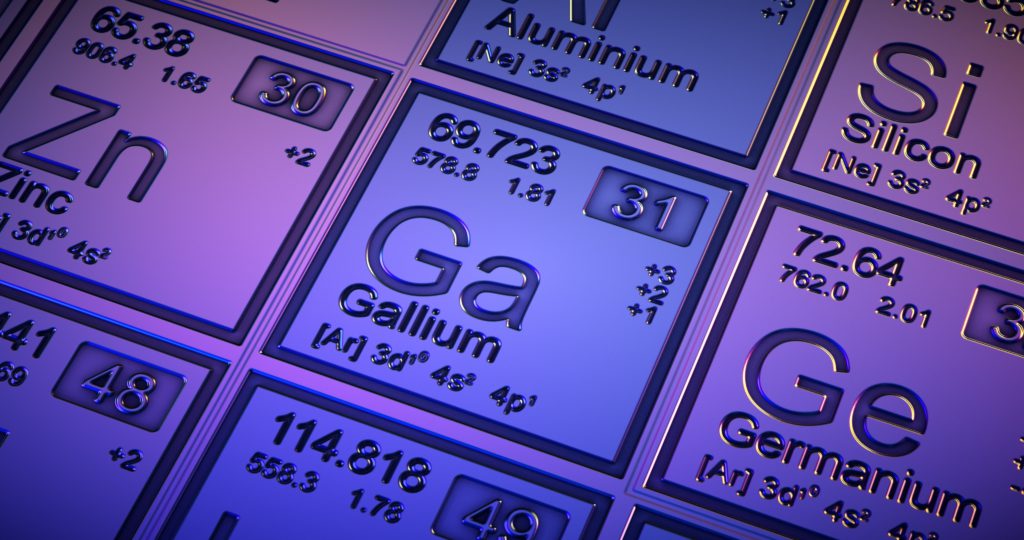What are gallium and germanium? Niche metals hit by China curbs

China is clamping down on exports of two obscure yet crucial metals in an escalation of the trade war on technology with the US and Europe.
But what exactly are gallium and germanium and how important are they? Here’s a quick recap:
What happened?
Beijing announced it will impose curbs on both metals, along with their chemical compounds, in order to protect Chinese national security starting Aug. 1. Exporters will need to apply for licenses from the commerce ministry if they want to start or continue to ship them out of the country and will be required to report details of the overseas buyers and their applications.
What are gallium and germanium?
Both silvery-white in appearance and commonly classified as “minor metals,” the metals aren’t typically found on their own in nature. Instead, they’re produced in small concentrations as a byproduct from refineries focused on other, more mainstream raw materials like zinc or alumina.
The markets are tiny when compared with other commodities like copper or oil — for example, US imports of gallium metal and gallium arsenide wafers in 2022 were valued at only about $225 million according to government data. But their use in strategic industries mean that the curbs could still have far-reaching impact.
What are they used for?
The two metals have a vast array of specialist uses across chipmaking, communications equipment and defense. Gallium is used in compound semiconductors, which combine multiple elements to improve transmission speed and efficiency, in TV and mobile phone screens, solar panels and radars. Germanium’s uses include fiber-optic communication, night-vision goggles and space exploration – most satellites are powered with germanium-based solar cells.
How important is China?
Trade flows in these small and niche markets are tricky to track, but China is overwhelmingly the top source of both metals — accounting for 94% of gallium supply and 83% of germanium, according to a European Union study on critical raw materials this year.
And while both metals can be substituted, doing so could cost more and may hinder performance of the technology, according to CRU Group, a metals industry intelligence provider.
So can other countries produce more?
Neither metal is particularly rare, but processing costs can be high. Because China has exported them relatively cheaply for so long, there are few facilities elsewhere to extract the metals. As China increased its production, other countries including Germany and Kazakhstan have pared back.
But if China’s move sends prices soaring, analysts expect production from other suppliers will rise to meet demand.
Recycling could also be key. Factory-floor scrap already accounts for some supply, while germanium scrap is also recovered from the windows in decommissioned tanks and other military vehicles, according to the USGS.
Where else are the metals produced?
Excluding China, other countries with gallium production capacity include Russia and Ukraine, where the metal has been produced as a byproduct of alumina, as well as South Korea and Japan — as a byproduct of zinc. In North America, germanium is recovered alongside zinc, lead and other metals at Teck Resources Ltd.’s Trail smelter in British Columbia.
Other producers include specialty materials maker 5N Plus Inc., and Indium Corporation in the US. In Europe, Belgium’s Umicore SA is a producer of both metals.
And some mining projects contain higher concentrations of the metals and could offer an opportunity to increase supply — such as the Kipushi zinc project expected to start up next year in the Democratic Republic of Congo.
(By Archie Hunter, with assistance from Ian King)
More News
Anglo starts talks with banks on possible De Beers IPO
Anglo is pursuing a dual-track process in its effort to exit De Beers by trying to find a buyer for the struggling business.
March 28, 2025 | 12:19 pm
PDAC JV video: Golden Pursuit preps for discovery at sub-Arctic Gordon Lake, CEO says
A program to scan archived core using AI and expand geophysical surveys on the Wooferine-Lynk Zones is set to start soon.
March 28, 2025 | 11:35 am
{{ commodity.name }}
{{ post.title }}
{{ post.excerpt }}
{{ post.date }}



Comments